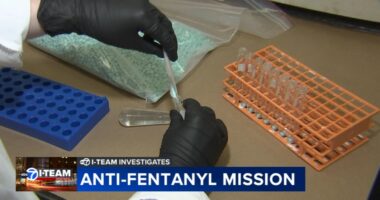Share this @internewscast.com
The Mega Millions jackpot has soared to a staggering $980 million for this Friday’s draw, as reported by lottery officials, following a lack of jackpot-winning tickets in the latest round.
Tuesday night’s draw revealed the numbers 10, 13, 40, 42, and 46, while the golden Mega Ball was 1.
Winners have the option to receive their prize as an annuity or opt for a lump-sum cash payment, which amounts to $445.3 million before taxes. In the event of multiple winners, the jackpot is divided accordingly.
This year has already seen four Mega Millions jackpots claimed, but Friday’s drawing marks the 40th since the last big win on June 27, setting a new game record, according to officials.
In a related lottery news, a nearly $1.8 billion Powerball jackpot was claimed in September by players in Missouri and Texas, ranking as one of the largest in U.S. history. Although the current Mega Millions jackpot is not within the top 10 largest U.S. lottery prizes, it stands as the eighth-largest in Mega Millions history since the game’s inception in 2002.
Where does the money go?
Mega Millions tickets are priced at $5 each and are available in 45 states, along with Washington, D.C., and the U.S. Virgin Islands. Half of the revenue from each ticket remains in the jurisdiction where it was purchased. Local lottery agencies manage the game within their areas, adhering to laws that dictate how the proceeds are used.
What are the odds of winning?
The odds of winning the jackpot are 1 in 290,472,336, but the odds of winning any Mega Millions prize are 1 in 23.
What is problem gambling?
The National Council on Problem Gambling defines problem gambling as “gambling behavior that is damaging to a person or their family, often disrupting their daily life and career.”
It is sometimes called gambling addiction or gambling disorder, a recognized mental health diagnosis. The group says anyone who gambles can be at-risk.
Its National Problem Gambling Helpline, 1-800-522-4700, connects anyone seeking assistance with a gambling problem to local resources.
.

















